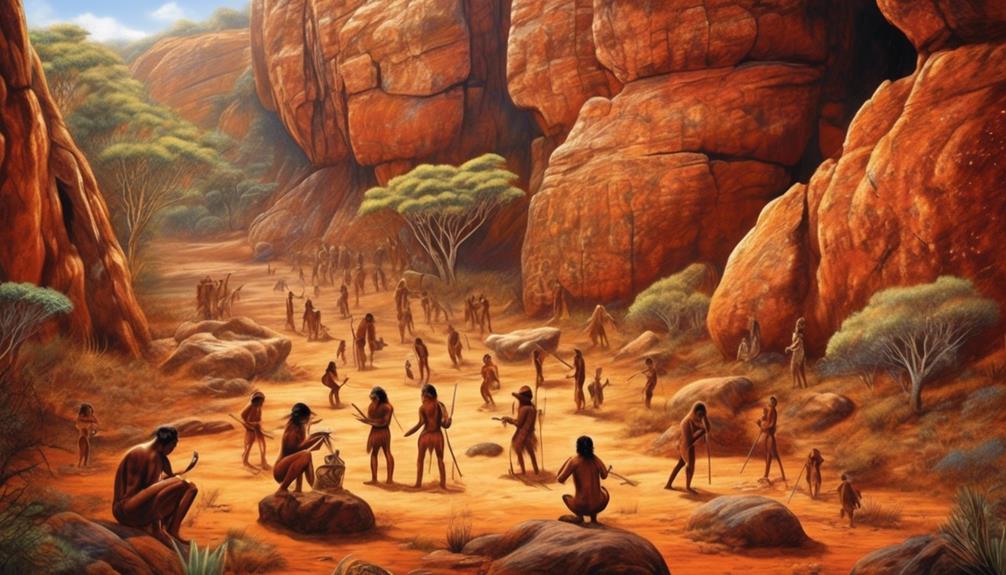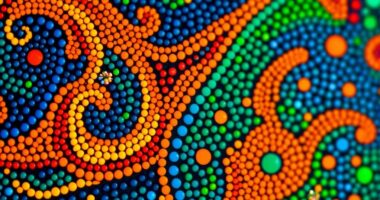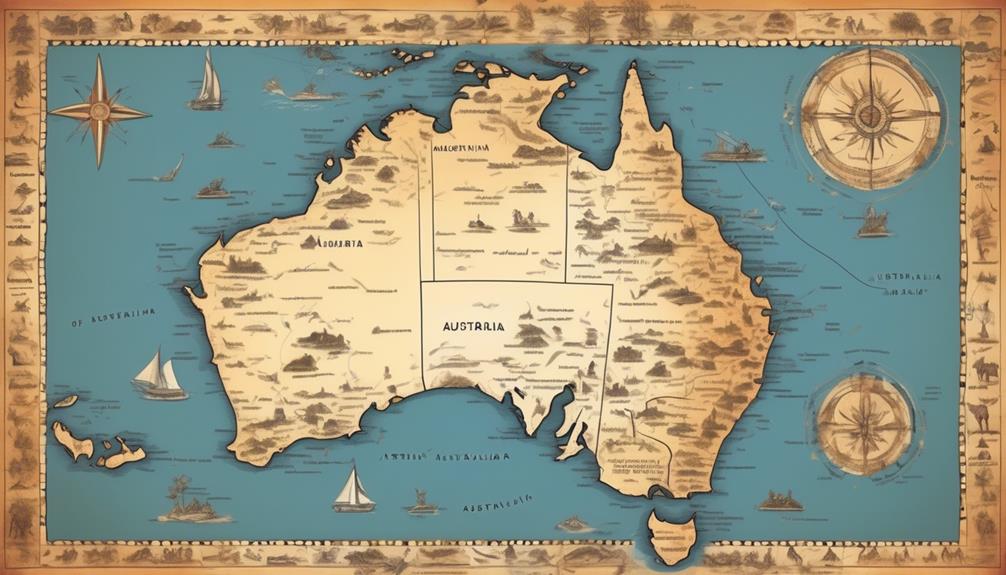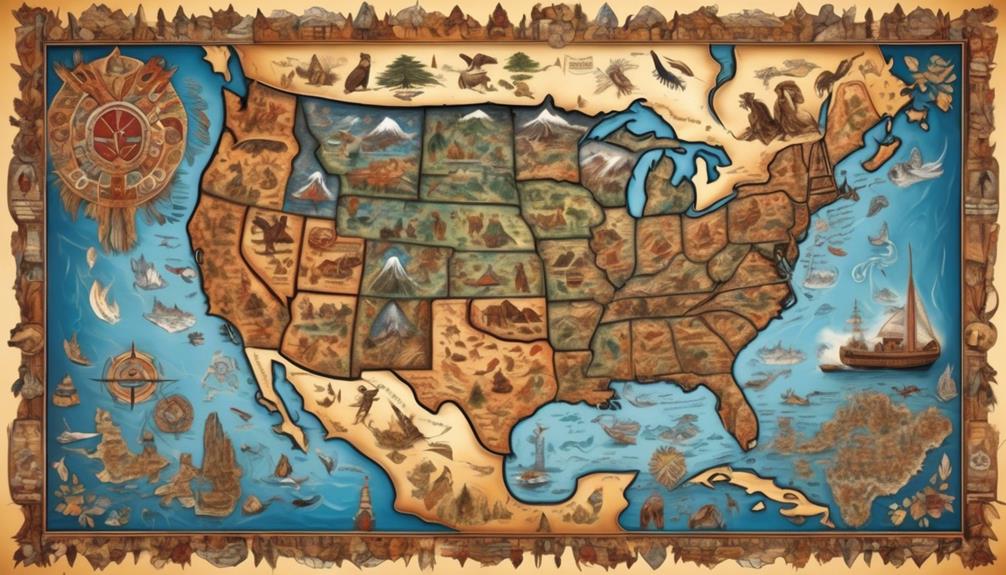When it comes to the first settlers of Australia, there is a deep and complex heritage that has had a major impact on the country’s cultural and societal structure.
The origins of the first peoples and their unique connection to the land offer a fascinating insight into the ancient past of this diverse region.
Exploring the beginnings of human settlement in Australia unveils a story that is both intriguing and thought-provoking, shedding light on the resilience and ingenuity of the early inhabitants.
Key Takeaways
- Aboriginal Australians and Torres Strait Islander Peoples were the early inhabitants of Australia.
- Ancient settlements and rock art provide evidence of the early inhabitants' resilience and adaptability.
- Ancient Australia was home to diverse megafauna, but their extinction led to environmental changes and the adaptation of surviving species.
- Stone tools and weapons, as well as advanced fire-making techniques, were essential for survival and shaped Australian culture.
Aboriginal Australians
Early in human history, Aboriginal Australians settled and thrived on the continent of Australia, developing rich cultural traditions and a deep connection to the land. Their deep-rooted connection to the land is evident in the way they've preserved their cultural traditions for thousands of years. Aboriginal traditions are intrinsically linked to their understanding of the land, their kinship systems, and their spiritual beliefs. Through their traditions, they've passed down knowledge from one generation to another, ensuring the preservation of their cultural identity.
Cultural preservation is central to the Aboriginal way of life. Their oral traditions, art, dance, and song serve as vessels for passing on their history, spiritual beliefs, and customs. These traditions aren't merely historical artifacts but living, breathing elements of their identity. They embody a profound connection to the land, carrying the wisdom of their ancestors into the present.
As we explore the rich tapestry of Aboriginal traditions, it's essential to recognize the ongoing struggles they face in preserving their cultural heritage. The impact of colonization and the forced assimilation policies have threatened the survival of these traditions. Yet, despite these challenges, Aboriginal communities continue to fight for the recognition and preservation of their cultural practices, asserting their right to celebrate and pass on their heritage to future generations.
In understanding and supporting the preservation of Aboriginal traditions, we honor the resilience and strength of a people who've safeguarded their cultural identity despite immense adversity. It's a testament to their unwavering commitment to liberation and self-determination.
Torres Strait Islander Peoples
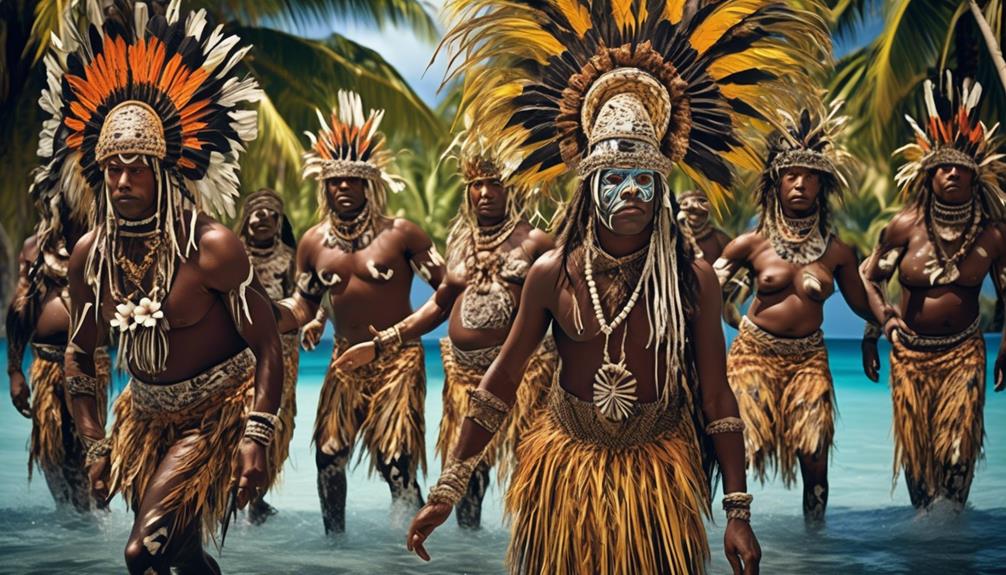
The history of Torres Strait Islander Peoples is deeply intertwined with our connection to the land and our rich cultural heritage. Our identity is shaped by the traditions passed down through generations and our ongoing struggle for recognition of land rights and self-determination.
- Cultural Traditions: Our cultural traditions are central to our identity as Torres Strait Islander peoples. From our unique music and dance to our intricate art forms, these traditions reflect our deep connection to the land and sea.
- Land Rights: The fight for land rights has been a pivotal aspect of our history. Our connection to our traditional lands isn't just about ownership, but about preserving our cultural practices and sustaining our communities.
- Identity Politics: The politics of identity have played a significant role in our struggle for self-determination. Our fight for recognition and respect as a distinct and sovereign people continues to be a central focus of our political and social endeavors.
Our journey as Torres Strait Islander peoples has been marked by resilience and resistance. Our cultural resilience in the face of colonization and ongoing challenges is a testament to the strength of our community.
Our struggle for self-determination is ongoing, and our voices continue to grow louder as we assert our rights and strive for liberation.
Arrival of the First Humans
Our connection to the land and sea is intertwined with the arrival of the first humans in Australia, marking the beginning of our enduring history. The first migrations to this ancient continent were monumental, as our ancestors ventured into new territories, seeking sustenance and shelter. These ancient settlements signify the resilience and adaptability of our people, who carved out a life in harmony with the Australian landscape.
| Emotions | Reflection |
|---|---|
| Awe | Gratitude |
| Resilience | Connection |
| Hope | Harmony |
| Liberation | Endurance |
| Unity | Adaptability |
As we reflect on the first human arrivals in Australia, we are filled with awe and gratitude for the courage and tenacity displayed by our forebears. Their resilience in the face of unknown challenges inspires a deep sense of connection to our roots, reminding us of the enduring spirit that courses through our veins. The ancient settlements they established give us hope and teach us about living in harmony with nature, fostering a sense of liberation from modern constraints. It is a testament to the endurance and adaptability of our people, and it unites us in a shared history that continues to shape our identity.
Megafauna and Early Environment

As we explore the ancient environment of Australia, we encounter a diverse array of megafauna that once roamed this land. The early environment was home to some of the largest terrestrial animals to have ever lived, shaping the landscape in ways we can scarcely imagine. Here are some fascinating insights into the megafauna and the early environment:
- Giant Kangaroos and Wombats: These oversized marsupials, such as the Diprotodon and Procoptodon, were a common sight in ancient Australia, showcasing the impressive diversity of the megafauna.
- Massive Reptiles: Enormous reptiles like the Megalania, a giant monitor lizard, and the formidable Megalania prisca, a huge snake, dominated the prehistoric Australian landscape.
- Extinction of Megafauna: The extinction of megafauna, which occurred around 45,000 years ago, is a topic of ongoing scientific debate. The possible role of human intervention in this extinction event continues to be a subject of intense study and speculation.
- Environmental Adaptation: The megafauna's extinction led to significant environmental changes, prompting surviving species to adapt to the evolving landscape. This period of adaptation shaped the flora and fauna we see in Australia today.
- Ecosystem Transformation: The disappearance of megafauna triggered a cascade of changes across the ecosystem, influencing vegetation, predator-prey dynamics, and the overall ecological balance.
The study of megafauna and the early environment provides a glimpse into the complex interactions between ancient species and their surroundings, offering valuable insights into the ecological history of Australia.
Rock Art and Archaeological Evidence
We've come across compelling evidence of the early inhabitants of Australia through the rock art and archaeological findings.
These intricate rock paintings and engravings provide a window into the ancient culture and beliefs of the first Australians.
Additionally, the archaeological discoveries offer valuable insights into the tools, dwellings, and daily lives of these early inhabitants.
Rock Art Significance
Why is rock art significant in understanding the early inhabitants of Australia?
Rock art provides valuable insights into the artistic expression and cultural significance of the early inhabitants. It offers a window into their spiritual beliefs and storytelling tradition, allowing us to comprehend their worldview and way of life.
The significance of rock art lies in its ability to convey the beliefs, values, and experiences of ancient communities, transcending language barriers and providing a tangible link to the past.
Through rock art, we can discern the evolution of artistic styles and symbolic representations, shedding light on the complexities of early Australian societies.
The preservation of these ancient artworks serves as a testament to the enduring legacy of the first Australians and their profound connection to the land.
Archaeological Findings Importance
The rock art and archaeological evidence discovered in Australia provide significant insights into the early inhabitants' daily lives and cultural practices. Artifact preservation and advanced archaeological techniques have allowed us to uncover a wealth of information about the tools, art, and structures used by the first Australians.
This evidence gives us a window into their cultural significance and indigenous perspectives, shedding light on their spiritual beliefs, social structures, and technological advancements. By studying these findings, we can better understand the complexities of their societies and the ways in which they interacted with their environment.
It's essential to approach these discoveries with respect for indigenous knowledge and traditions, recognizing the importance of their input in interpreting and preserving these invaluable pieces of history.
Tools and Technology
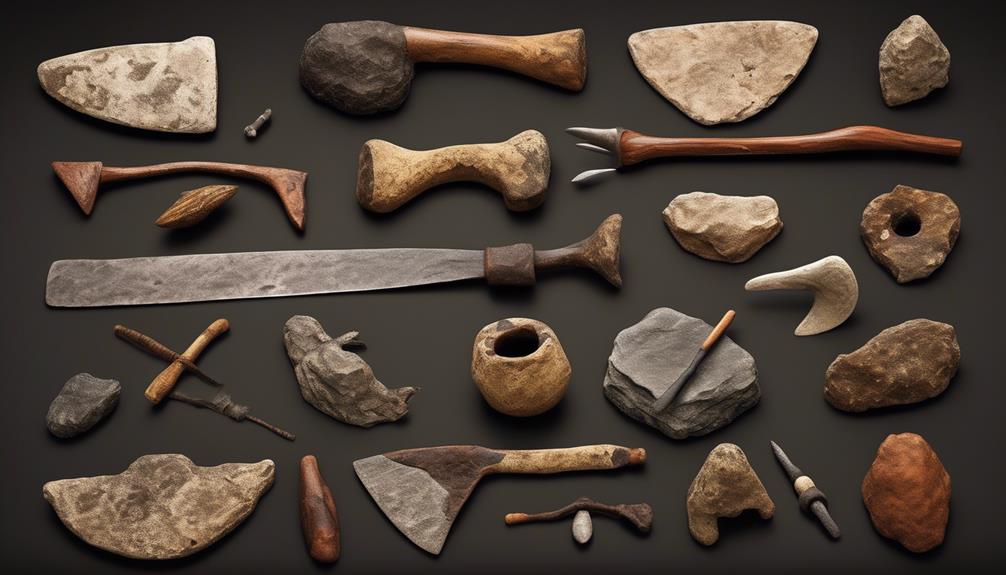
Let's talk about the fascinating tools and technology used by the early inhabitants of Australia.
They crafted stone tools and weapons, such as knives and spearheads, to assist in hunting and daily tasks.
Additionally, they developed advanced techniques for creating fire, crucial for survival in the diverse Australian landscapes.
Stone Tools and Weapons
Evidence of early inhabitants of Australia using stone tools and weapons dates back tens of thousands of years. The evolution of stone tools and weapons reflects the progressive nature of early Australians, showcasing their ability to adapt and innovate. This evolution not only revolutionized hunting techniques but also paved the way for advancements in other aspects of their lives. The use of these tools and weapons enabled our ancestors to thrive and survive in the challenging Australian environment. The significance of stone tools and weapons in shaping early Australian culture can't be overstated.
- Stone tool evolution demonstrates the ingenuity and resourcefulness of early inhabitants.
- Hunting techniques evolution allowed for efficient and sustainable food sourcing.
- Adaptation of tools for various purposes showcases the versatility of early Australians.
- Innovation in weapon-making reflects the strategic and tactical mindset of our ancestors.
- Utilization of natural resources exemplifies a deep understanding of the environment.
Boomerangs and Spear-Throwers
Boomerangs and spear-throwers emerged as sophisticated hunting tools, complementing the evolution of stone tools and weapons among early inhabitants of Australia. The construction of boomerangs involved intricate knowledge of wood properties and aerodynamics, allowing for their unique returning flight.
These tools weren't only used for hunting but also for cultural and ceremonial purposes. Spear-throwers, also known as woomeras, revolutionized hunting techniques, enhancing the effectiveness of hunting by increasing the distance and speed with which spears could be thrown. This innovation allowed for a more efficient and successful hunting experience, contributing to the survival and prosperity of early Australian inhabitants.
The mastery of these tools reflected the resourcefulness and ingenuity of these ancient societies, showcasing their deep understanding of their environment and their commitment to thriving in their natural world.
Fire-Making Techniques
Fire-making techniques were an essential component of early Australian inhabitants' tool and technology repertoire, enabling them to harness the power of fire for various purposes. Our ancestors employed primitive fire-making methods, utilizing traditional techniques passed down through generations.
These methods included:
- Friction-based fire making, such as the hand drill or fire plough
- Fire sawing, using a flexible, straight stick and a serrated edge
- Flint and steel, where a hard mineral was struck against steel to produce sparks
- Fire thong, involving a split, flexible branch and a solid piece of wood
- Fire piston, using rapid compression of air to ignite tinder
These techniques reveal the resourcefulness and ingenuity of early Australian inhabitants, demonstrating their deep understanding of the natural world and their ability to manipulate it for their benefit.
Dreamtime Stories and Creation Myths
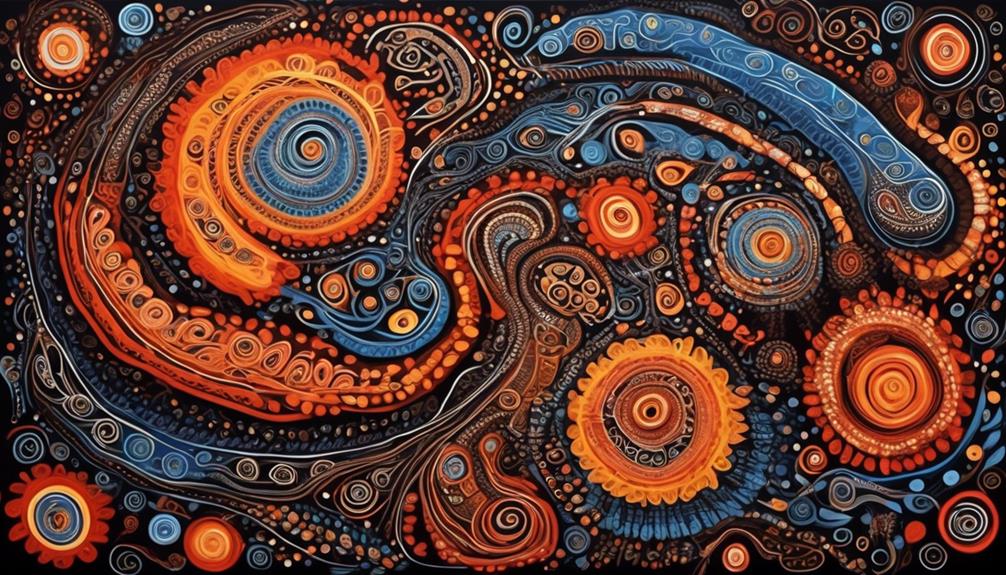
In the rich tapestry of Australian Indigenous culture, Dreamtime stories and creation myths hold a central place, weaving together the spiritual beliefs and cultural heritage of the earliest inhabitants of Australia. These stories are deeply rooted in the Dreamtime beliefs, which form the foundation of Aboriginal spirituality and provide explanations for the creation of the world and all its inhabitants. The Dreamtime isn't just a period in the distant past but is believed to be ever-present, connecting the past, present, and future in a timeless continuum.
Creation stories are an integral part of Dreamtime beliefs, depicting the journeys of ancestral beings who shaped the land, created animals, plants, and natural features, and laid down the laws and customs for Aboriginal societies. These stories are passed down through storytelling traditions, ensuring the preservation of cultural knowledge and wisdom across generations. They hold immense cultural significance, providing a sense of identity, belonging, and connection to the land for Indigenous Australians.
These Dreamtime stories and creation myths aren't merely tales of the past; they're living narratives that continue to shape the spiritual and cultural practices of Indigenous communities today. They offer profound insights into the interconnectedness of all living things and the importance of maintaining harmony with the natural world. Embracing these stories allows us to appreciate the depth of Indigenous knowledge and spirituality, fostering a more inclusive and respectful society.
Hunter-Gatherer Societies
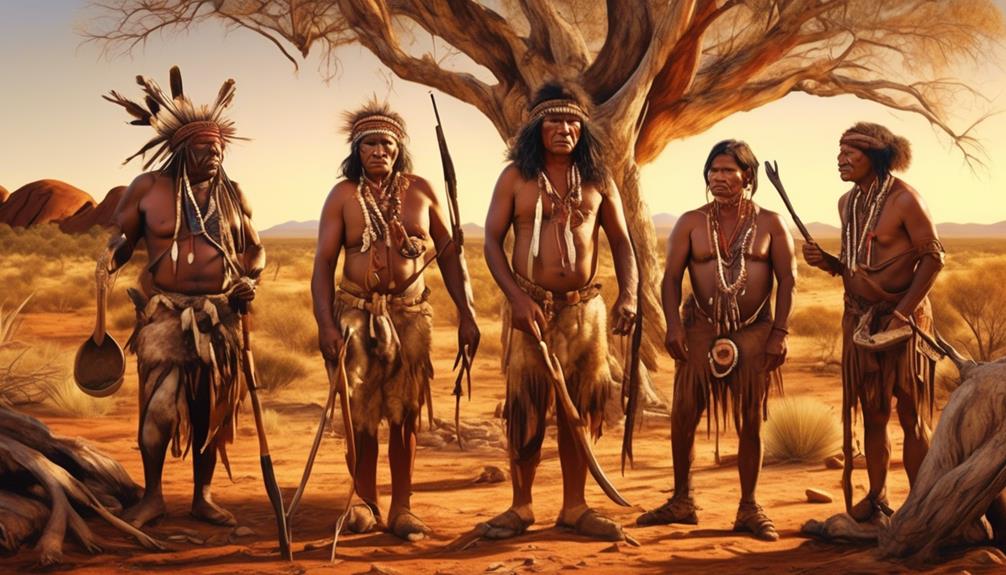
Hunter-gatherer societies relied on the gathering of wild plants and the hunting of animals for their sustenance and survival. This hunter-gatherer lifestyle was deeply interconnected with the natural world, and traditional knowledge transmission played a vital role in passing down the essential skills and practices for survival.
Here are some key aspects of the hunter-gatherer lifestyle:
- Nomadic Lifestyle: Hunter-gatherer societies were often nomadic, following the seasonal availability of plants and animals. This constant movement allowed them to sustainably gather resources without depleting any one area.
- Deep Connection to Nature: These societies had a profound understanding of the land, plants, and animals around them. This intimate knowledge was crucial for survival and was passed down through generations.
- Egalitarian Social Structure: Hunter-gatherer societies typically had a more egalitarian social structure, where decision-making was often shared among community members, and resources were distributed more equally.
- Innovative Tools and Techniques: Over time, these societies developed innovative tools and techniques for hunting, gathering, and food preparation. These innovations were a result of careful observation and experimentation.
- Spiritual Connection: The hunter-gatherer lifestyle often included spiritual beliefs and practices that emphasized their connection to the land and the natural world.
The traditional knowledge transmission within hunter-gatherer societies sustained their way of life for thousands of years, showcasing the resilience and adaptability of these early inhabitants.
Trade and Exchange Networks

We'll explore the trade routes and goods that were exchanged among early inhabitants of Australia, shedding light on the impact of cultural exchange.
We'll also discuss how the connections within these trade and exchange networks were mapped, offering insight into the complexity and reach of these early economic systems.
This will provide a rich understanding of the interactions and relationships that shaped the lives of the first Australians.
Trade Routes and Goods
During the early periods of inhabitation, ancient Australians established extensive trade networks to exchange goods and resources across different regions. This exchange facilitated cultural interactions and the sharing of valuable resources, enriching the lives of early inhabitants.
The trade routes and network connections were vital for the exchange of goods and ideas, contributing to the diversity and interconnectedness of ancient Australian societies.
- Trade routes served as conduits for cultural exchange
- Goods exchange allowed for the sharing of resources and specialized items
- Network connections facilitated the spread of knowledge and technology
- Interactions through trade routes led to the exchange of artistic and symbolic objects
- The interconnected trade networks promoted unity and cooperation among diverse communities
These trade and exchange networks were essential for the flourishing and development of early Australian societies, fostering a sense of unity and collaboration.
Cultural Exchange Impact
The extensive trade networks and exchange routes established by ancient Australians not only facilitated the sharing of goods and resources but also significantly impacted the cultural exchange among diverse communities. Through these networks, indigenous traditions, knowledge, and customs were disseminated and exchanged, leading to a rich tapestry of cultural diversity across the continent. The interconnectedness of these trade routes allowed for the exchange of not only physical goods but also ideas, beliefs, and practices. This cultural exchange fostered a sense of unity and mutual understanding among different groups, contributing to the development of a complex and interconnected societal framework. The table below provides a glimpse of the diverse cultural elements that were exchanged through these networks.
| Exchanged Cultural Elements | Description |
|---|---|
| Art and Symbolism | Shared artistic expressions and symbols |
| Spiritual Beliefs | Exchange of religious and spiritual practices |
| Ceremonial Practices | Shared ceremonial rituals and traditions |
| Language Influences | Cross-pollination of linguistic influences |
| Social Organization | Exchange of societal structures and norms |
Network Connections Mapped
Mapping the intricate trade and exchange networks of ancient Australia unveils the extensive interconnectedness and diversity of cultural interactions across the continent. This mapping reveals the fascinating ways in which ancient communities engaged in trade and exchange, shaping their cultural practices and beliefs. The network connections provide insights into the genetic connections and migration patterns of early inhabitants, shedding light on how different groups interacted and moved across the land.
Our understanding of these networks allows us to appreciate the rich tapestry of connections that existed among diverse communities, challenging previous narratives of isolation. Through studying these trade and exchange networks, we can honor the interconnectedness and shared history of Australia's early inhabitants.
- Genetic connections
- Migration patterns
- Cultural exchanges
- Resource sharing
- Technological innovations
Climate Change and Adaptation
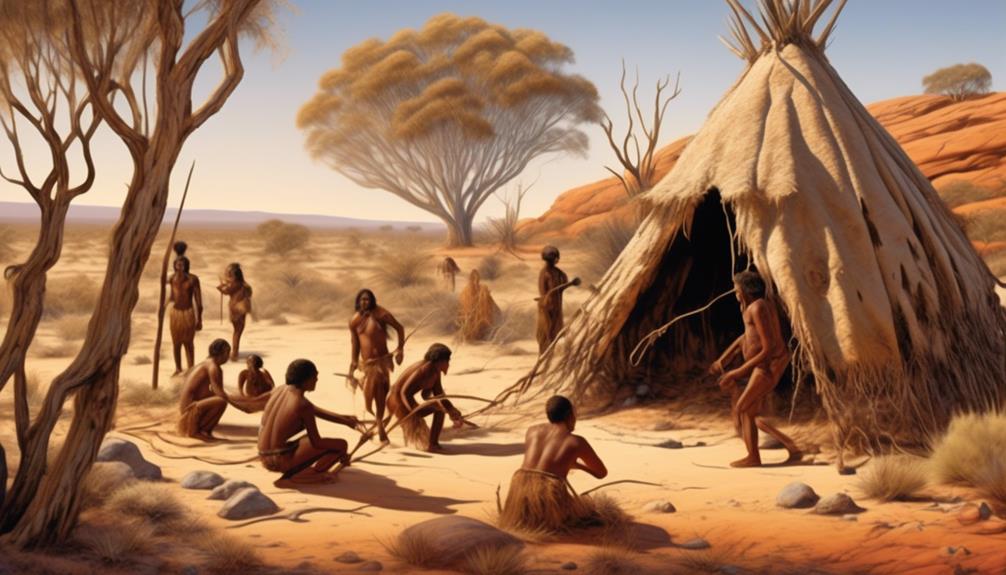
Adapting to changes in the environment has been a fundamental aspect of human survival throughout history. Climate adaptation has always been a crucial skill, and Indigenous resilience offers a valuable perspective on this. Indigenous communities in Australia have a rich history of adapting to the dynamic Australian climate. They have demonstrated remarkable resilience and resourcefulness in the face of environmental challenges.
| Climate Change Impacts | Indigenous Adaptation Strategies |
|---|---|
| Erratic rainfall patterns | Creation of sophisticated water storage systems, such as rock holes and channels, to capture and store water during dry periods |
| Rising temperatures | Utilization of natural cooling techniques, like seeking shade and harnessing breezes, in constructing shelter and settlements |
| Changing flora and fauna | Diversification of hunting and gathering practices, and cultivation of a wide variety of food sources to mitigate the impact of fluctuating resources |
Indigenous communities have traditionally managed the land sustainably, using practices that maintained ecological balance. These practices include controlled burning to regenerate the landscape, promote new growth, and reduce the risk of large, destructive fires. Additionally, the deep knowledge of seasonal patterns and environmental cues has allowed Indigenous peoples to adjust their activities and movements to align with the changing climate.
Understanding the historical strategies employed by Indigenous communities provides valuable insights for modern-day climate adaptation. It emphasizes the importance of respecting and learning from traditional knowledge and practices, and integrating them into contemporary approaches to environmental management and resilience-building.
First Contact With European Explorers
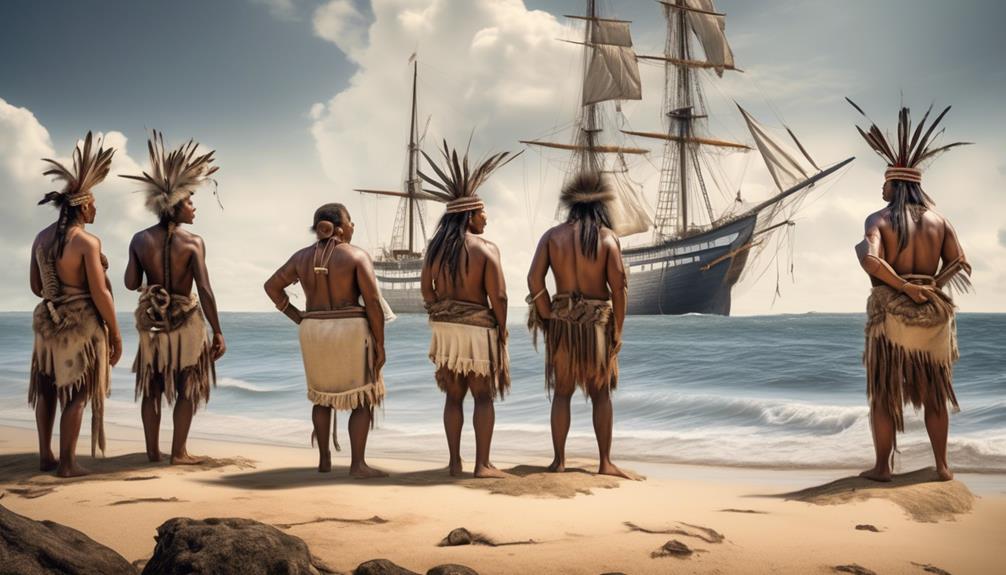
When European explorers first arrived in Australia, the impact on the indigenous people was significant. Our article will examine the exchange of cultures and the lasting effects of this initial contact.
We'll explore how this historic event shaped the early inhabitants' way of life and their interactions with the newcomers.
European Arrival Impact
Upon the arrival of European explorers to Australia, the indigenous inhabitants encountered a significant and irrevocable impact on their way of life. The impact of colonization was profound, leading to a complex interplay of cultural exchange and upheaval. Here's how this encounter unfolded:
- Loss of Land: The arrival of European settlers led to the dispossession of indigenous lands, disrupting traditional lifestyles.
- Disease and Health: The introduction of new diseases, to which indigenous peoples had no immunity, resulted in devastating consequences for their populations.
- Cultural Transformation: Indigenous communities experienced a forced assimilation into European ways of life, leading to the erosion of traditional customs and practices.
- Violence and Conflict: The encounter with European explorers often resulted in violent confrontations, leading to loss of life and social disruption.
- Economic Exploitation: European arrival brought about economic exploitation, with indigenous peoples often being exploited for labor and resources.
This transformative encounter continues to shape Australia's history and the ongoing struggle for indigenous liberation.
Indigenous Culture Exchange
The initial encounter between indigenous Australians and European explorers sparked a profound exchange of cultural traditions and knowledge. This cultural exchange, often overlooked in historical narratives, was a pivotal moment in our shared history. Indigenous traditions, passed down through generations, intertwined with the new knowledge and practices introduced by the European explorers. This interaction led to a rich tapestry of shared experiences, beliefs, and customs. To highlight the significance of this exchange, consider the following table:
| Indigenous Traditions | European Contributions |
|---|---|
| Dreamtime stories | Farming techniques |
| Bush tucker knowledge | Metalworking skills |
| Traditional healing methods | Navigation and cartography |
This exchange not only shaped the indigenous cultures but also influenced the European understanding of the land. Embracing this exchange allows us to appreciate the depth of our interconnected histories and the richness it brings to our collective identity.
Impact of Colonization
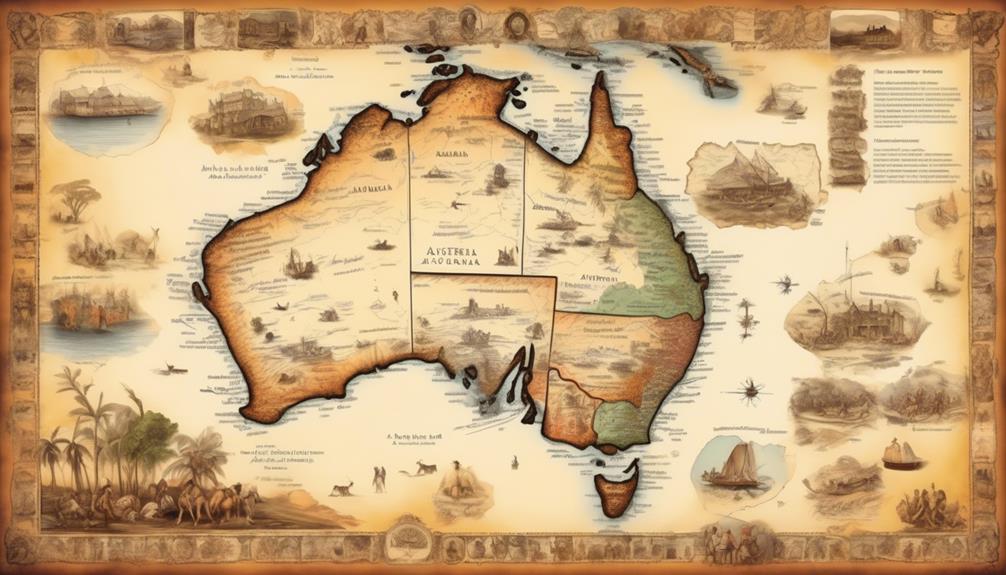
Despite early inhabitants of Australia having a rich and diverse culture, the impact of colonization brought significant upheaval and detriment to their way of life. The consequences of colonization continue to reverberate through indigenous communities, but their resilience and determination to preserve their culture and traditions have been remarkable.
The impact of colonization on the early inhabitants of Australia is a painful chapter in history, marked by the following:
- Loss of Land and Resources: The colonization led to the dispossession of indigenous peoples from their ancestral lands, disrupting their traditional connection to the land and depriving them of vital resources for sustenance.
- Cultural Suppression: The imposition of foreign cultural norms and practices suppressed indigenous traditions, languages, and knowledge systems, eroding the rich tapestry of their heritage.
- Health and Social Disparities: The arrival of colonizers introduced diseases, social inequalities, and discriminatory policies, leading to significant health and social disparities among indigenous communities.
- Generational Trauma: The enduring impact of colonization has resulted in generational trauma, contributing to ongoing mental health challenges and social issues within indigenous populations.
- Resilience and Cultural Renaissance: Despite these challenges, indigenous communities have displayed remarkable resilience, actively working to revitalize and preserve their cultural practices, languages, and traditional knowledge systems.
The impact of colonization on the early inhabitants of Australia is a poignant reminder of the enduring strength and resilience of indigenous peoples in the face of adversity.
Resistance and Survival
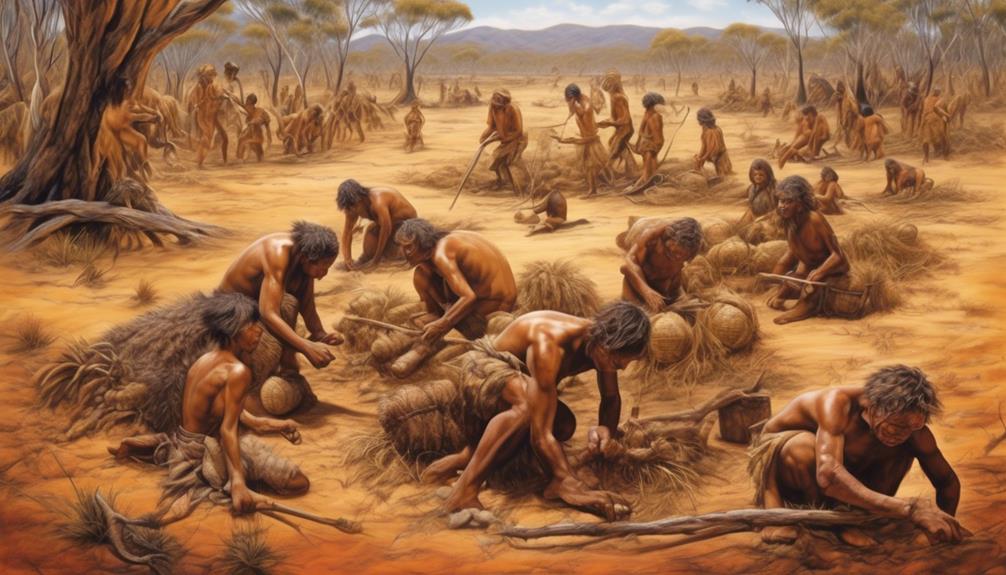
Amidst the challenges brought about by colonization, indigenous communities in Australia demonstrated remarkable resilience and unwavering determination to preserve their cultural heritage and traditions. Faced with the encroachment of their lands and the suppression of their autonomy, these communities developed ingenious resistance tactics and survival strategies to safeguard their ways of life.
One of the most powerful forms of resistance was the preservation of oral traditions and storytelling. Through these narratives, knowledge of land management, hunting techniques, and cultural practices were passed down through generations, ensuring the continuity of their heritage despite attempts to erase it.
Additionally, the practice of traditional ceremonies and rituals became acts of resistance, providing a space for the community to maintain their spirituality and connection to the land.
Moreover, indigenous communities strategically formed alliances with neighboring groups, strengthening their collective resilience against colonial forces. By sharing survival strategies and resistance tactics, these alliances bolstered their ability to withstand the pressures of colonization and protect their cultural practices.
The continuation of traditional crafts and artistic expressions also served as acts of defiance, allowing indigenous communities to assert their identity and resilience in the face of adversity. Through these creative endeavors, they were able to maintain a sense of cultural pride and solidarity, further fortifying their resistance against cultural erasure.
In essence, the indigenous communities in Australia exemplified extraordinary strength and perseverance, employing a range of resistance tactics and survival strategies to safeguard their cultural heritage and ensure their survival in the face of colonization.
Contemporary Indigenous Cultures
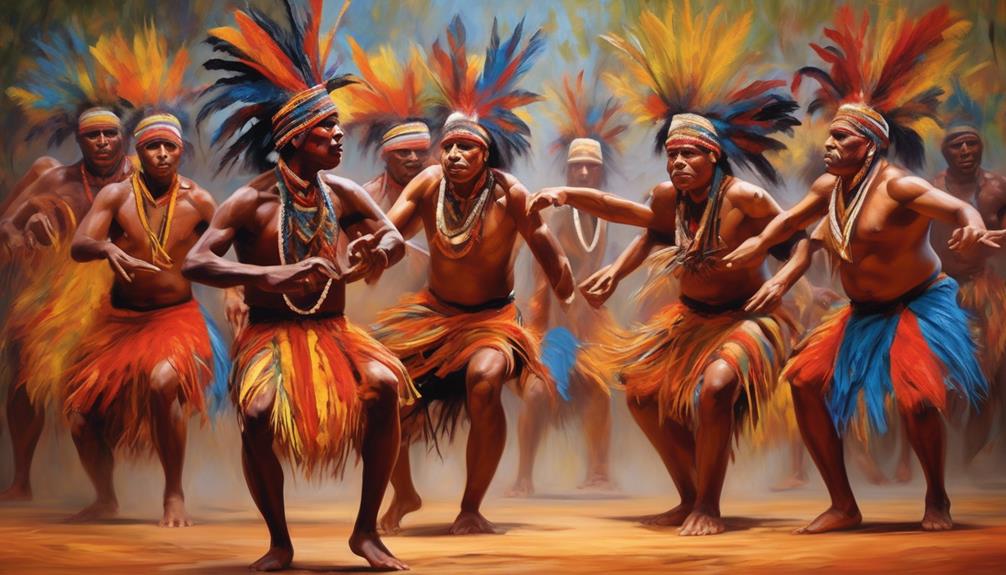
Emerging from the legacy of resilience and cultural preservation, contemporary Indigenous cultures in Australia continue to thrive and evolve, encompassing a rich tapestry of traditions, art forms, and community practices. Today, Indigenous communities actively engage in preserving their heritage while also adapting to the modern world, allowing their cultures to flourish in new ways.
- Contemporary Indigenous Art: Indigenous artists are creating diverse and vibrant works that reflect their cultural heritage and contemporary experiences. Through mediums such as painting, sculpture, and digital art, they express their connection to the land, ancestral stories, and the ongoing struggle for recognition and justice.
- Traditional Ceremonies and Rituals: Despite the challenges posed by modernity, traditional ceremonies and rituals remain pivotal in Indigenous communities. These practices, which have been passed down through generations, serve as a means of connecting with ancestors, maintaining spiritual beliefs, and fostering community cohesion.
- Cultural Revival Programs: Indigenous communities are actively involved in reviving and preserving traditional languages, dances, and music. Cultural revival programs not only ensure the survival of these ancient practices but also provide a platform for younger generations to learn and engage with their heritage.
- Community-Led Initiatives: Indigenous peoples are taking the lead in developing community-led initiatives that promote cultural sustainability and economic empowerment. These initiatives encompass various sectors, including tourism, agriculture, and environmental conservation, while upholding cultural values and practices.
- Global Indigenous Solidarity: Indigenous communities in Australia are forging alliances with global Indigenous movements, advocating for their rights, land sovereignty, and self-determination on the international stage. This solidarity amplifies their voices and strengthens their position in the fight against ongoing colonial legacies.
Recognition and Reconciliation
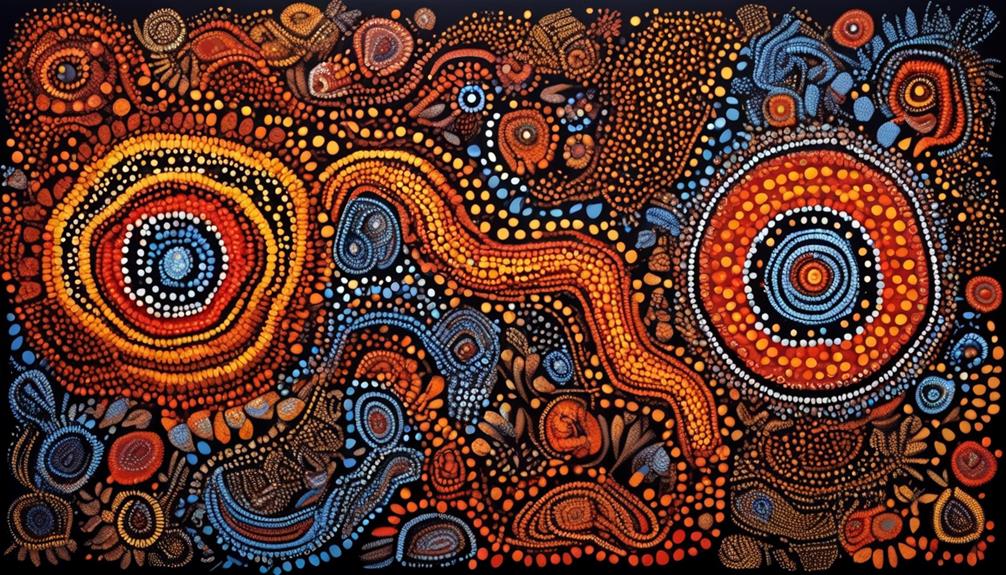
We actively pursue recognition and reconciliation as integral steps toward healing historical injustices and fostering unity within Australian society. Recognizing the deep impact of colonialism and past policies on Indigenous communities, we're committed to acknowledging and addressing the injustices that have occurred. Through this process, we seek to reconcile the past with the present and create a foundation for a more harmonious future.
Cultural exchange plays a crucial role in the recognition and reconciliation process. By actively engaging in cultural exchange, we aim to promote mutual understanding, respect, and appreciation for the rich and diverse Indigenous cultures. This exchange allows for the sharing of knowledge, traditions, and experiences, fostering a deeper sense of connection and unity.
Reconciliation involves not only acknowledging the past but also taking meaningful steps to address its impact. This includes working towards closing the gap in health, education, and economic outcomes between Indigenous and non-Indigenous Australians. It also involves empowering Indigenous communities and ensuring their voices are heard in decision-making processes that affect their lives.
The journey toward recognition and reconciliation is ongoing, and it requires a collective commitment to truth-telling, healing, and justice. By embracing this process, we can build a more inclusive and equitable society where the rights and cultures of Indigenous Australians are respected and celebrated.
Frequently Asked Questions
What Were the Specific Challenges Faced by Early Indigenous Australians in Terms of Food Sources and Environmental Adaptation?
Facing food scarcity, early Indigenous Australians navigated their territories, adapting to diverse environments. They utilized communication methods to exchange knowledge and resources.
Challenges included adapting to fluctuating climates and finding sustainable food sources. Despite these hurdles, they demonstrated resilience and innovation in their environmental adaptation strategies.
This period of history highlights the strength and ingenuity of early Indigenous Australians in overcoming the specific challenges posed by food sources and environmental adaptation.
How Did Early Indigenous Australians Navigate and Communicate Across Different Regions and Territories?
We've learned that early Indigenous Australians were skilled navigators, using celestial observations, wind patterns, and the layout of the land to travel across different regions.
Their diverse Indigenous languages facilitated communication and trade, essential for survival.
The traditional trade networks they established were extensive, covering vast distances and connecting various communities.
These navigational techniques and communication methods were vital for their resilience and thriving in diverse environments.
What Are Some Lesser-Known Examples of Resistance and Survival Strategies Employed by Early Indigenous Australians in the Face of Colonization?
When it comes to resistance strategies and survival techniques, early Indigenous Australians employed a wide range of lesser-known examples in the face of colonization.
They utilized intricate knowledge of the land, developed sophisticated farming and hunting methods, and established complex social structures to resist and survive.
These strategies reflect their resilience and determination to maintain their culture and way of life in the midst of immense challenges.
What Modern-Day Cultural Practices and Traditions Among Contemporary Indigenous Cultures Can Be Traced Back to Early Inhabitants of Australia?
Modern-day cultural practices and traditions among contemporary indigenous cultures can be traced back to early inhabitants of Australia. These include art, storytelling, dance, and connection to land.
It's fascinating that over 250 Aboriginal languages are still spoken today, showcasing the resilience and richness of their cultural heritage.
These traditions are vital for preserving indigenous identity and are fundamental to understanding and respecting their history and ongoing presence in Australia.
Are There Any Specific Archaeological Findings or Rock Art That Provide Clues About the Early Social and Cultural Structures of Indigenous Australian Societies?
We've discovered fascinating rock art and archaeological findings that shed light on the social and cultural structures of early indigenous Australian societies.
These clues provide insight into the adaptation strategies, communication methods, and survival tactics of the early inhabitants in the face of environmental challenges.
Conclusion
In conclusion, we've learned about the diverse and resilient early inhabitants of Australia, including Aboriginal Australians and Torres Strait Islander Peoples.
Their rich history, from the arrival of the first humans to the impact of colonization, is reflected in their rock art and archaeological evidence.
Despite the challenges they've faced, they continue to thrive and maintain their vibrant cultures.
It's important to recognize and reconcile with their past and present experiences.
